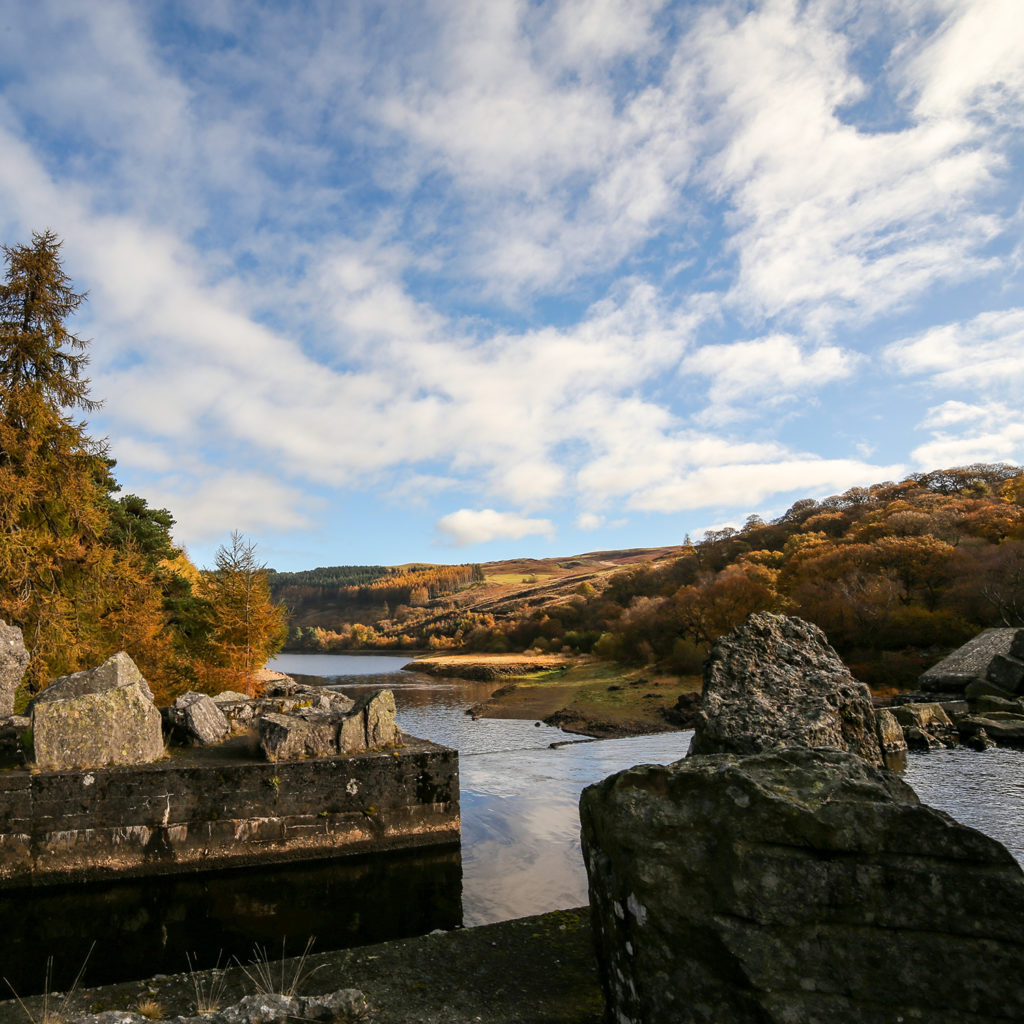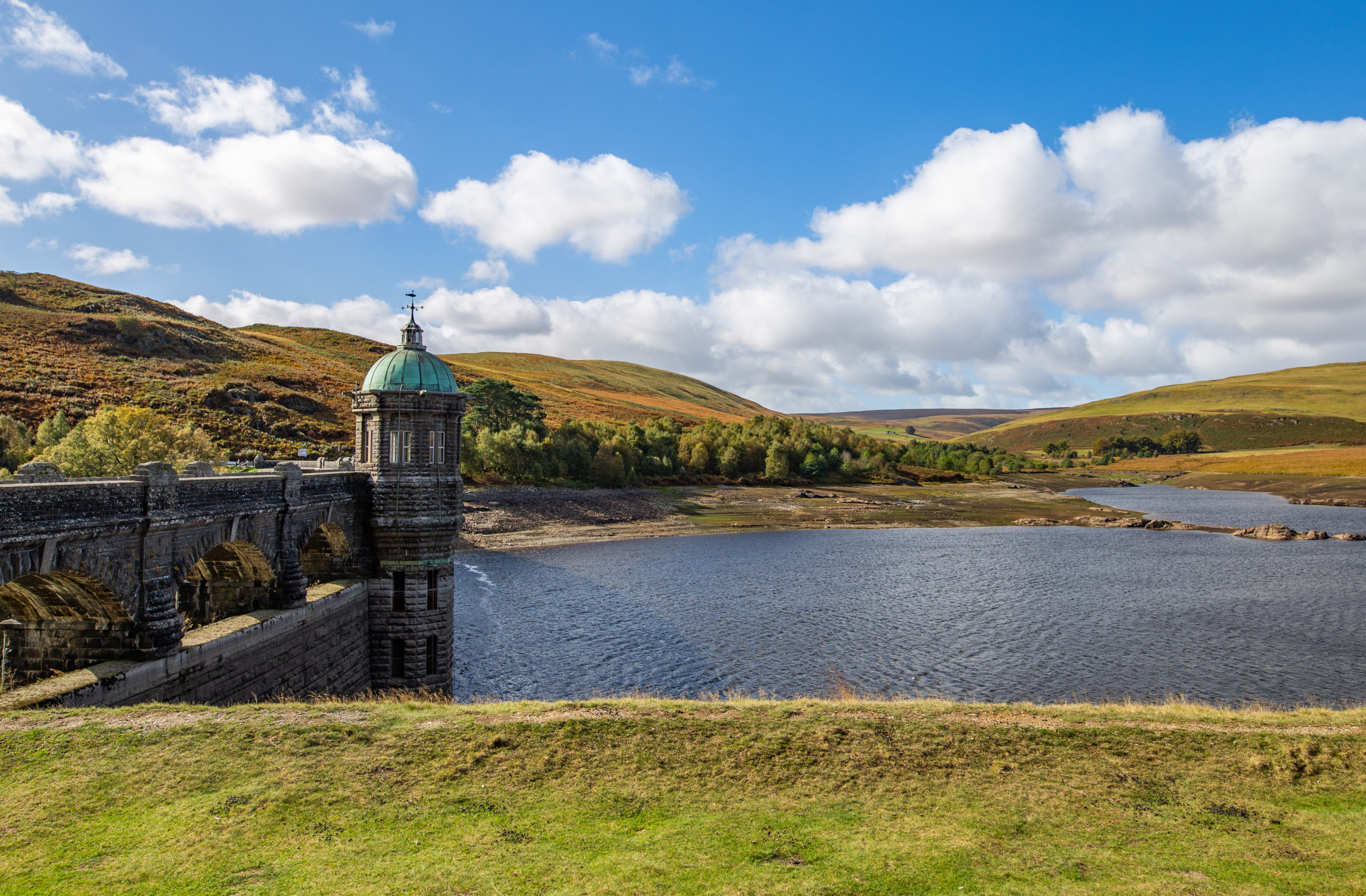The dams are undoubtedly the biggest draw to Elan Valley, offering a wonderful year-round backdrop for cyclists, walkers, and photographers.
With the exception of Dol y Mynach, all the dams are also accessible by car.
There are four dams on the river Elan; Craig Goch, Pen y Garreg, Garreg Ddu, and Caban Coch. The river Claerwen has the newest, and largest Claerwen dam followed by the unfinished Dol y Mynach dam.
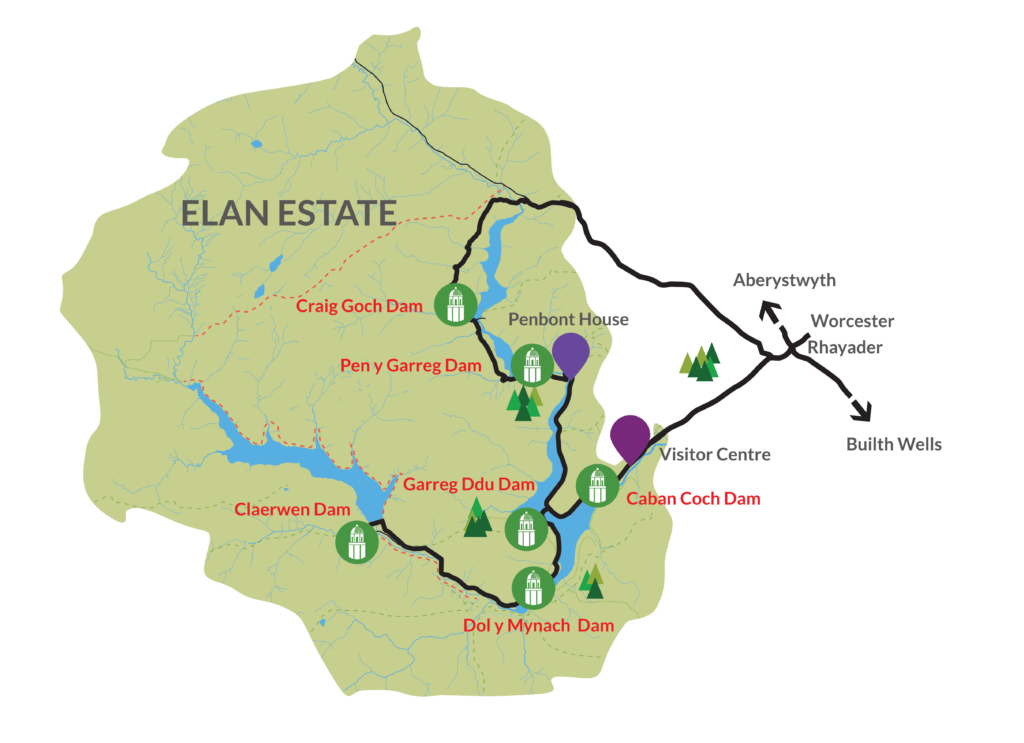
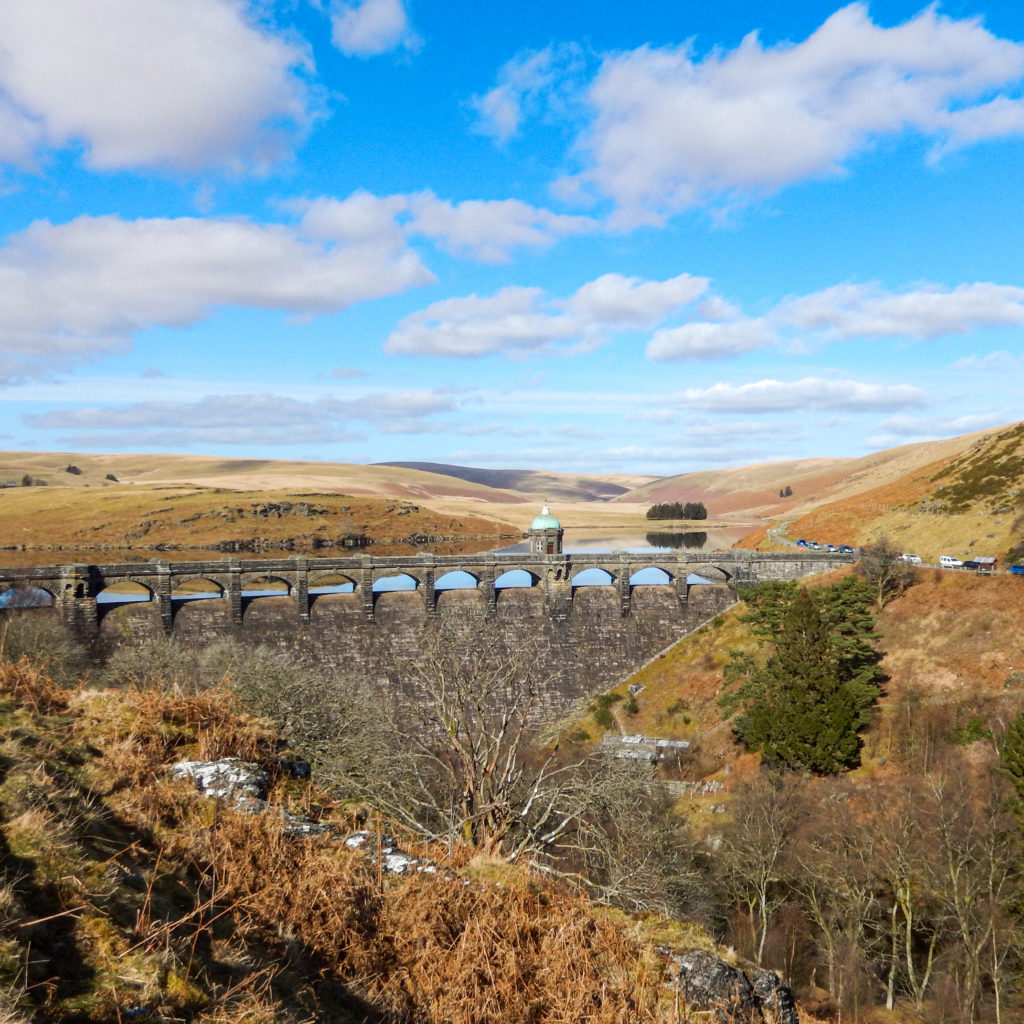
Craig Goch
Craig Goch is the highest upstream of the series of dams in the Elan Valley and is often referred to as the ‘top dam.’ Its located at a height of 1040 feet (317 metres) above sea level. As with all the dams, work started with the arrival of the railway line at the site. In the case of this dam the line had the furthest to go and a rocky outcrop had to be blasted and dug through on the route to the site, now known as ‘Devil’s Gulch.’
Work on excavating the foundations for a secure base for the structure started in July 1897, some three years after the start of work on the lowest dam at Caban Coch.
Craig Goch is seen by many as the most attractive of the dams, with an elegantly curved retaining wall and a series of arches carrying a narrow roadway across the top of the dam. It has a domed valve tower and the structure is typical of the ‘Birmingham Baroque’ style of much of the waterworks scheme.
Height: 36m
Length: 156m
Water level above sea level: 317m
Reservoir area: 88ha
Volume: 9,220 megalitres
Valley: Elan
Garreg Ddu
Garreg Ddu Dam in the lower Elan Valley serves a dual role. It is a low, completely submerged dam which plays a vital role in maintaining a constant supply of water to Birmingham. It also supports masonry pillars carrying the access roadway to the neighbouring valley of the River Claerwen. Garreg Ddu holds water back on the upstream side so that water can always be extracted at the Foel Tower. The bottom of Caban Coch Reservoir is too low to allow water to be gravity fed to Birmingham. Extraction from here would require pumps.
The importance of the submerged dam’s role in maintaining flow to Birmingham was proven in September 1937 after a prolonged period of exceptional drought, causing water levels in the Elan Valley to drop alarmingly.
The original road leading to this valley was to be lost, along with many original buildings, with the completion of the Caban Coch Dam and the subsequent flooding of the two valleys.
Valley: Elan
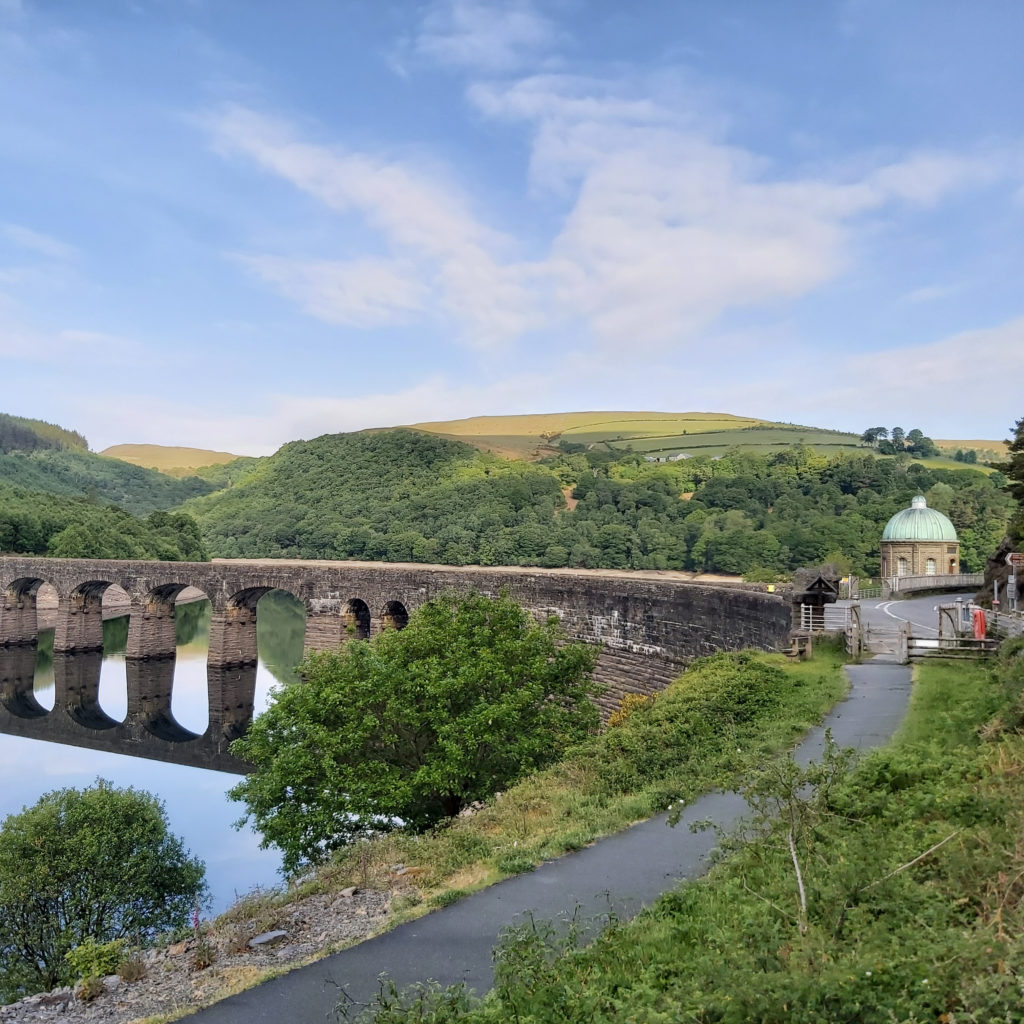
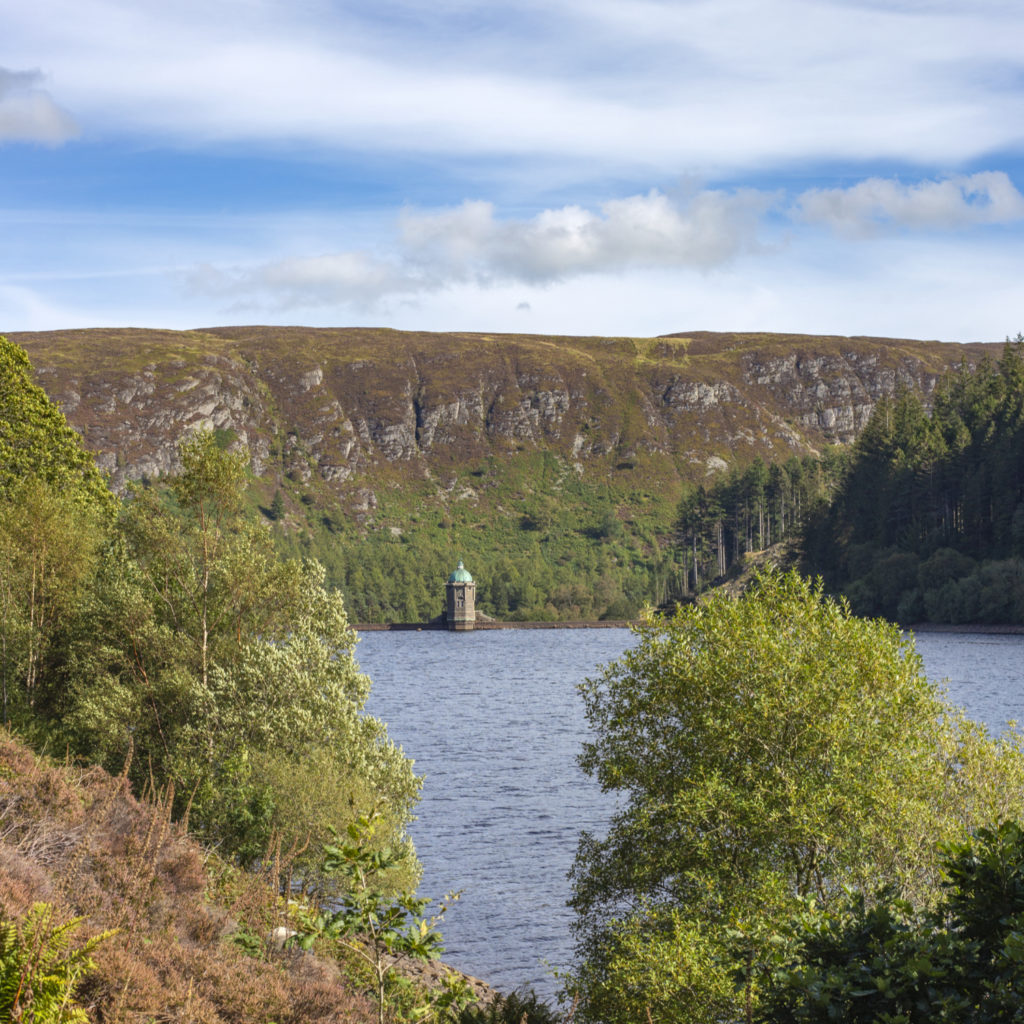
Pen y Garreg
Pen y Garreg is the third dam up the Elan Valley, often referred to as the ‘middle dam.’ The viaduct at Garreg Ddu further downstream does not resemble the other dams since the dam part of the structure is not visible above the water surface in normal conditions.
This dam is unusual in that it houses an access tunnel to the central tower which is lit by apertures in the downstream side of the dam. This enables Pen y Garreg to be opened to the public on certain days of the year. Check out our What’s On pages for our Dam Open Days.
Height: 37m
Length: 161m
Water level above sea level: 288m
Reservoir area: 50ha
Volume: 6,055 megalitres
Valley: Elan
Caban Coch
The lowest of the dams in the sequence of four built in the valley of the Elan River is Caban Coch Dam. It is the simplest and most functional in appearance of all the dams, resembling a natural waterfall when the reservoir is full and the dam is in full spate with water pouring over the dam wall.
Eustace Tickell, one of the senior engineers on the waterworks scheme, wrote of this dam before it was completed:
” … in time of flood, when the storm water rushes over the crest and falls to a depth of over 120 feet, the dam at Caban Coch will present the appearance of a magnificent waterfall.”
Caban Coch Dam contributes to the supply of water to Birmingham when water levels are normal, but it also provides compensation water to ensure that adequate flow is maintained in the Elan and the Wye downstream from the dams.
There are identical stone buildings on either side of the river just below the dam wall which house electricity generating turbines and valves and sluices to adjust the amount of compensation water released downstream.
Height: 37m
Length: 186m
Water level above sea level: 250m
Reservoir area: 220ha
Volume: 35,530 megalitres
Valley: Elan
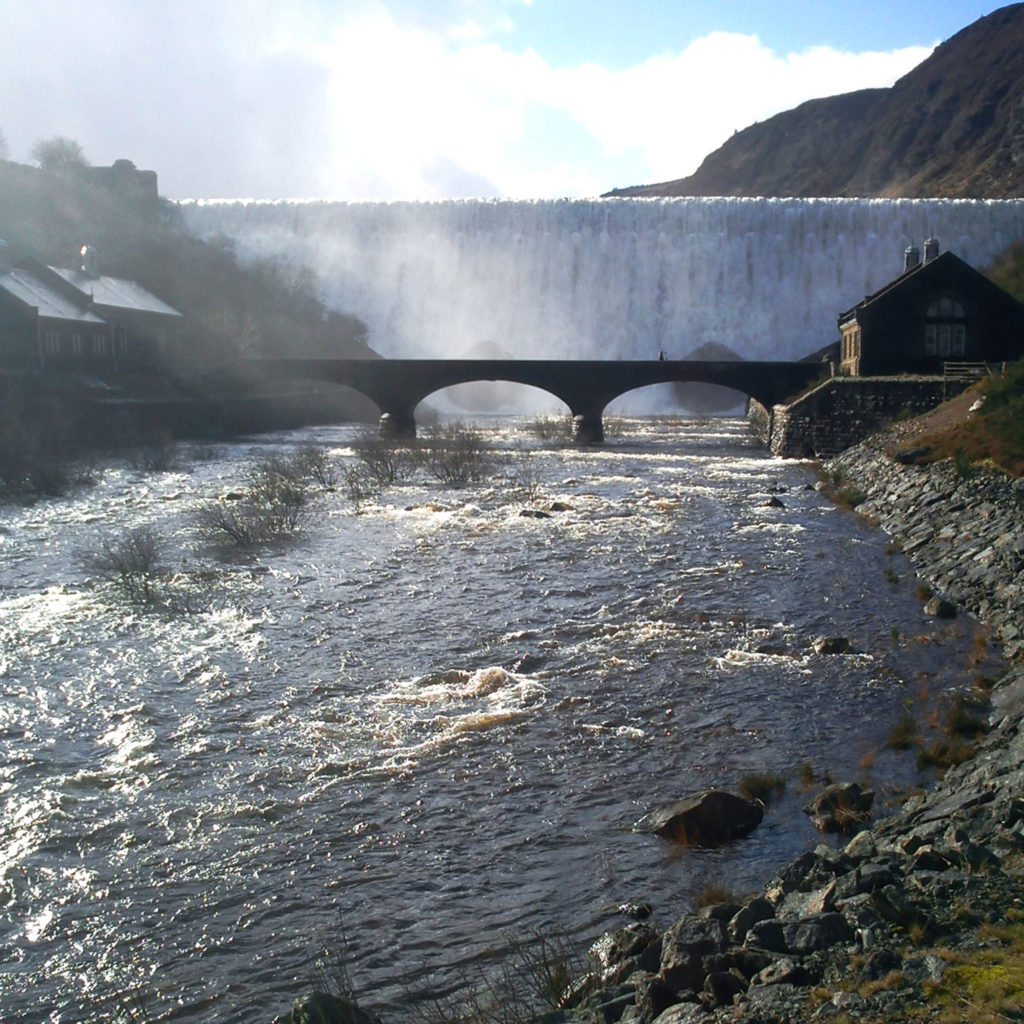
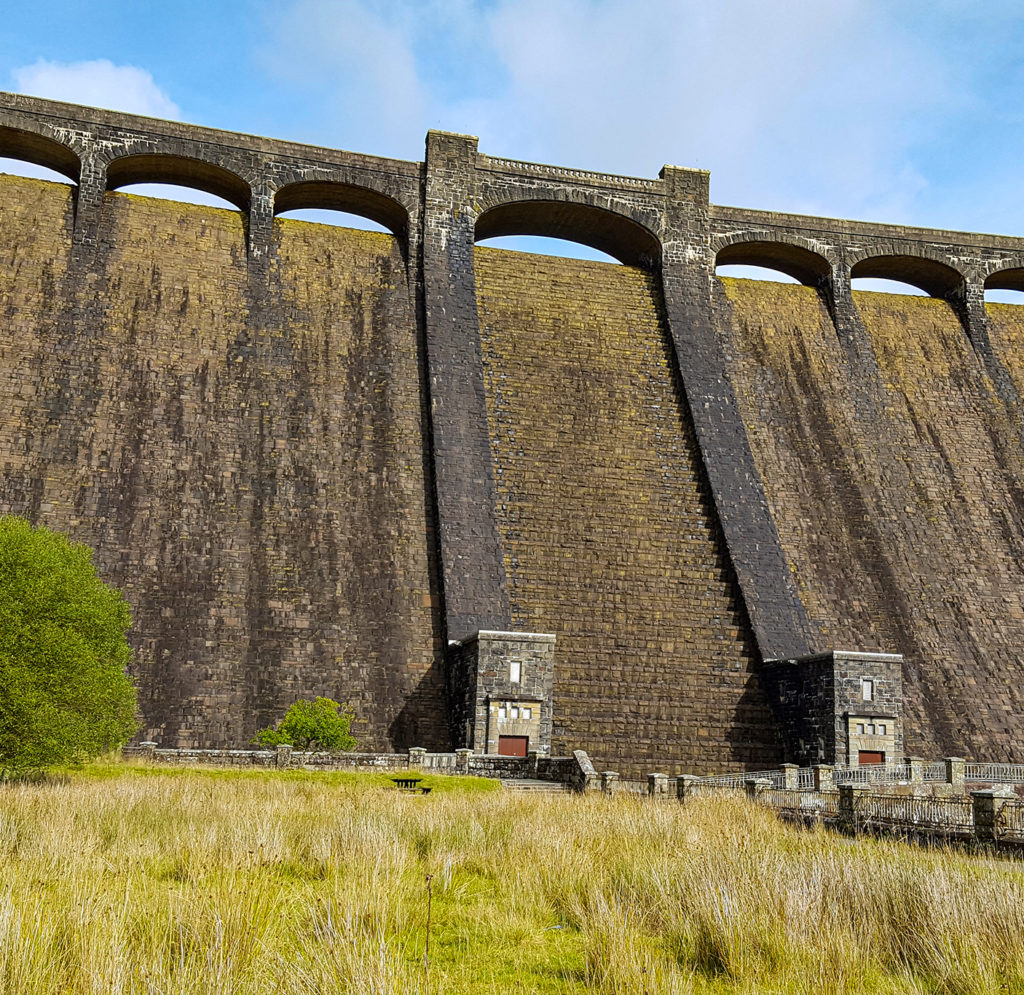
Claerwen Dam
The severe drought of 1937 served to give warning of the increasing need for much greater water storage capacity. The three dams proposed for the Claerwen Valley as part of the original Elan Valley waterworks scheme of 1892 had not been built, apart from the base of the dam at Dol y Mynach which had to be constructed early because of its location below the top water level of the Caban Coch Reservoir. Proposals for a large new dam in the upper Claerwen Valley were at an advanced stage by early 1939, but the Second World War meant that the demands of wartime production itself put even greater strains on the existing water supplies. The increasingly urgent calls for a new dam and reservoir on the Claerwen were to be reactivated soon after the end of the war. Progress in civil engineering techniques and in mechanisation, however, meant that much larger dams could be built by this date.
Its a measure of its size that Claerwen Dam was to create a reservoir which holds almost as much water as the combined total of the three earlier dams built in the neighbouring Elan Valley. The new dam is 184 ft (56 m) high and 1167 ft (355 m) long. Claerwen Dam was designed to be in keeping with the appearance of the much older structures nearby. Although built in concrete, the huge dam was faced with dressed stone at considerable extra cost in materials and labour.
The construction of the Claerwen Dam, the last of the dams in the district, took six years, using a workforce of 470. The improved techniques and mechanisation of large-scale civil engineering projects meant that large numbers of manual workers were no longer needed.
The Claerwen Dam was ceremonially declared open by the newly crowned Queen Elizabeth II in October 1952, in one of the first official engagements of her reign.
Height: 56m
Length: 355m
Water level above sea level: 369m
Reservoir area: 369ha
Volume: 48,300 megalitres
Valley: Claerwen
Dol y Mynach
Dol y Mynach is the unfinished dam. The original 1890s scheme for the sequence of dams and reservoirs in the Elan and Claerwen valleys included provision for three dams on the River Claerwen, which were intended to be constructed later when additional water supplies were needed for Birmingham. Caban Coch Dam was to create a reservoir with a top water level which would be above the level of the foundations of the dam at Dol y Mynach, the lowest of the planned three on the River Claerwen. It was therefore necessary to build the base of the Dol y Mynach Dam at the same time as the other dams in the adjacent valley of the River Elan. Huge blocks of stone, weighing anything up to ten tons set in concrete which form the solid core of the huge structure, can be seen between the outer faces of dressed masonry.
Valley: Claerwen
